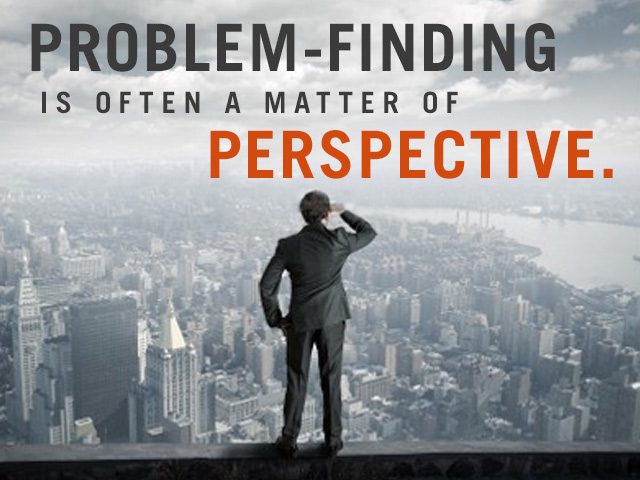As Leonardo da Vinci observed, problem-sensitivity is a key driver of ideas. Ideas come from problems and opportunities, so to have more ideas you have to train yourself to see more problems. One way to do this in an organizational setting is to come up with fresh perspectives on the work that you and your team do.
A number of years ago, we were at the headquarters of Dana Corporation in Toledo, Ohio. At the time, Dana, a global company with some 80,000 employees, was averaging 24 ideas per employee per year, or two per month. While talking with CEO Joe Magliochetti, he commented that one person had come up with some 400 implemented ideas that year, more than one per day.
“Who was it?” we asked. It turned out that it was the receptionist at headquarters, just downstairs from where we were.
Later in the day, we sat down with her to talk. The main thing we wanted to find out was how she was able to come up with so many ideas.
“It’s easy,” she told us, “I sit at the first point of contact for people at a large global corporation, who call in all the time with complaints or problems they are trying to resolve. I ask them about the issue, and then ask them what they think we shou;d do to fix it. I write down what they say, and pass it in as a suggestion. And everyone thinks I am a genius!”
She had come up with a clever perspective to view her work. Here are some other front-line “triggers for ideas” that we have encountered:
- Anytime it takes more than 15 seconds to find something, ask why.
- Anytime a customer is confused, ask why, and fix it. Confused customers have a less satisfying experience, or possibly take their business elsewhere. Their confusion also puts a load on employees.
- Workers at an insurance company came up with an interesting idea trigger. Every time a customer calls, ask why. What did the company do/required that made it necessary for the customer to call in?
Simple triggers like these, once ingrained, cause people to come up with many more ideas.
Another favorite idea trigger of ours is the Frequently Asked Question (FAQ). Many organizations have pages and pages of them.
Think about what an FAQ means. “We are fully aware of the issue/concern/problem and that our systems/policies/rules/guidelines are sloppy and unclear, but instead of fixing the root cause, here is our workaround.” Anything that is well designed in the first place shouldn’t need FAQs. FAQs are a treasure trove of improvement ideas.


